Use these tips to grow cup plant, a tall native perennial that attracts birds and pollinators.
Cup plant is a native prairie perennial with a big presence in the landscape. It grows up to 9 feet tall and is topped with yellow, daisy-like flowers for weeks in summer. Cup plant (Silphium perfoliatum) received its common name from the way its leaves wrap around the stems to form tiny reservoirs—or cups—that hold rainwater. Songbirds are attracted to the water and feast on cup plant seeds. Bumblebees and honeybees use parts of the plant for nesting, and several pollinators visit cup plants for pollen and nectar.
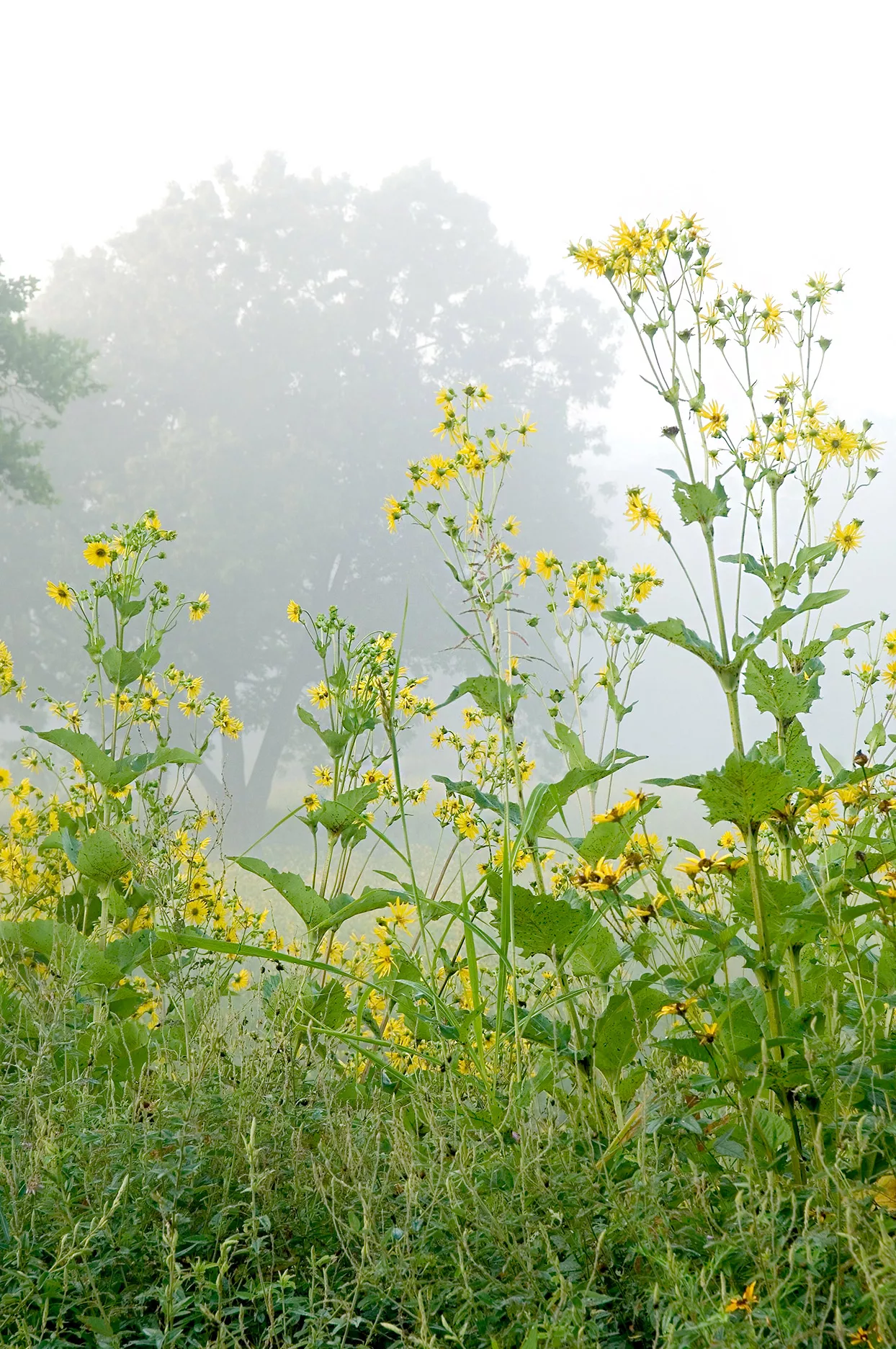
Cup Plant Overview
| Genus Name | Silphium perfoliatum |
| Common Name | Cup Plant |
| Additional Common Names | Compass plant |
| Plant Type | Perennial |
| Light | Sun |
| Height | 6 to 9 feet |
| Width | 1 to 3 feet |
| Flower Color | Yellow |
| Foliage Color | Blue/Green |
| Season Features | Summer Bloom |
| Special Features | Attracts Birds, Low Maintenance |
| Zones | 3, 4, 5, 6, 7, 8, 9 |
| Propagation | Seed |
| Problem Solvers | Drought Tolerant |
Where to Plant Cup Plant
Cup plant is at home in a prairie garden or meadow planting. Plant it alongside other North American prairie plants, such as little bluestem, big bluestem, coneflower, and monarda, to create an ever-changing wildlife oasis.
Space is an important consideration. Count on this long-lived perennial to grow 6 to 9 feet tall and 1 to 3 feet wide. It has a substantial presence in the garden and is best planted at the back of a landscape border, where it provides bold structure. Cup plant is also an excellent addition to a naturalized or low-maintenance landscape area.
Cup plant spreads quickly by seed. Be prepared to pull out unwanted seedlings in manicured garden settings; seedlings are often welcome in prairie gardens and meadow plantings.
How and When to Plant Cup Plant
Fall is the best time to plant cup plant from seed. Scatter the seeds on a prepared bed and press them lightly into the soil. Cover the entire seed bed with a loose covering of straw, and water the bed. The seeds can also be sown in spring, but they require a two-month period of cold stratification before being sown.
Plant cup plant nursery starts in early spring at the same depth as they grew in the nursery pots.
Water new seedlings and transplants regularly during the first growing season to encourage strong root development. Spread a 2-inch-thick layer of mulch over the root zone to prevent soil moisture evaporation and keep weeds at bay.
Cup Plant Care Tips
Cup plant is a low-maintenance plant that flourishes when its basic needs are met.
Light
Cup plant grows best in full sun—at least 8 hours of direct sunlight a day. Native to North American prairies, cup plant thrives in planting spots with all-day sunlight. It tolerates a few hours of shade and is known to grow at the prairie edge, near woodlands, in its native habitat.
Soil and Water
Cup plant tolerates both dry soil and clay, but it grows best in well-drained soil that is rich in nutrients. Crumbly, dark brown loam is perfect for growing cup plants, but this tough perennial survives, and even thrives, in many types of soil.
Temperature and Humidity
Heat and humidity don’t bother cup plant. This prairie plant thrives in high humidity and temperatures up to 100°F. It tolerates temperatures as low as 15°F in winter. As an herbaceous perennial, it dies back to ground level in late fall, but the dormant roots send up new shoots after a mild or harsh winter.
Fertilizer
Cup plant doesn‘t need fertilizer. Boost the nutrients in the plant’s root zone and improve soil structure by spreading a 2-inch-thick layer of compost around the plant annually in spring. The compost will break down and move into the soil profile, adding nutrients and improving texture.
Pruning
This perennial requires no pruning. If desired, reseeding can be limited by snipping off spent flower blossoms as soon as they fade. Removing the flower blossoms eliminates the potential for the plant to produce seed.
Pests and Problems
Cup plant has no notable pests, but it reseeds aggressively unless it is deadheaded. Seedlings are usually easy to pull out of the ground when they are young. Established plants have an extensive, fibrous root system and are more challenging to eradicate. Remove unwanted seedlings as soon as possible.
How to Propagate Cup Plant
The easiest way to multiply cup plant is to transplant seedlings from the original plant. Dig up young seedlings as soon as you notice them, and transplant the seedlings to a desired location. Water the transplants regularly for a few weeks to encourage them to develop robust root systems.
You can also multiply cup plant by collecting seed after it matures in late summer. Store the seeds in a dry, cool location. Put them in a refrigerator for two months for cold stratification, and sow the seeds in the garden in early spring. Press the seeds a scant ¼ inch into the soil and water gently. Seedlings emerge within a few weeks.
Types of Cup Plant
There are two varieties of cup plant. Silphium perfoliatum is the type that is widely available in the central and southern U.S. states. The other variety is Silphium connatum, which has hairy stems. This variety is relatively rare and is found in only a few mid-Atlantic states.
Cup Plant Companion Plants
Mix cup plants with other prairie natives to create a rich tapestry of color and texture that beckons wildlife.
Little Bluestem
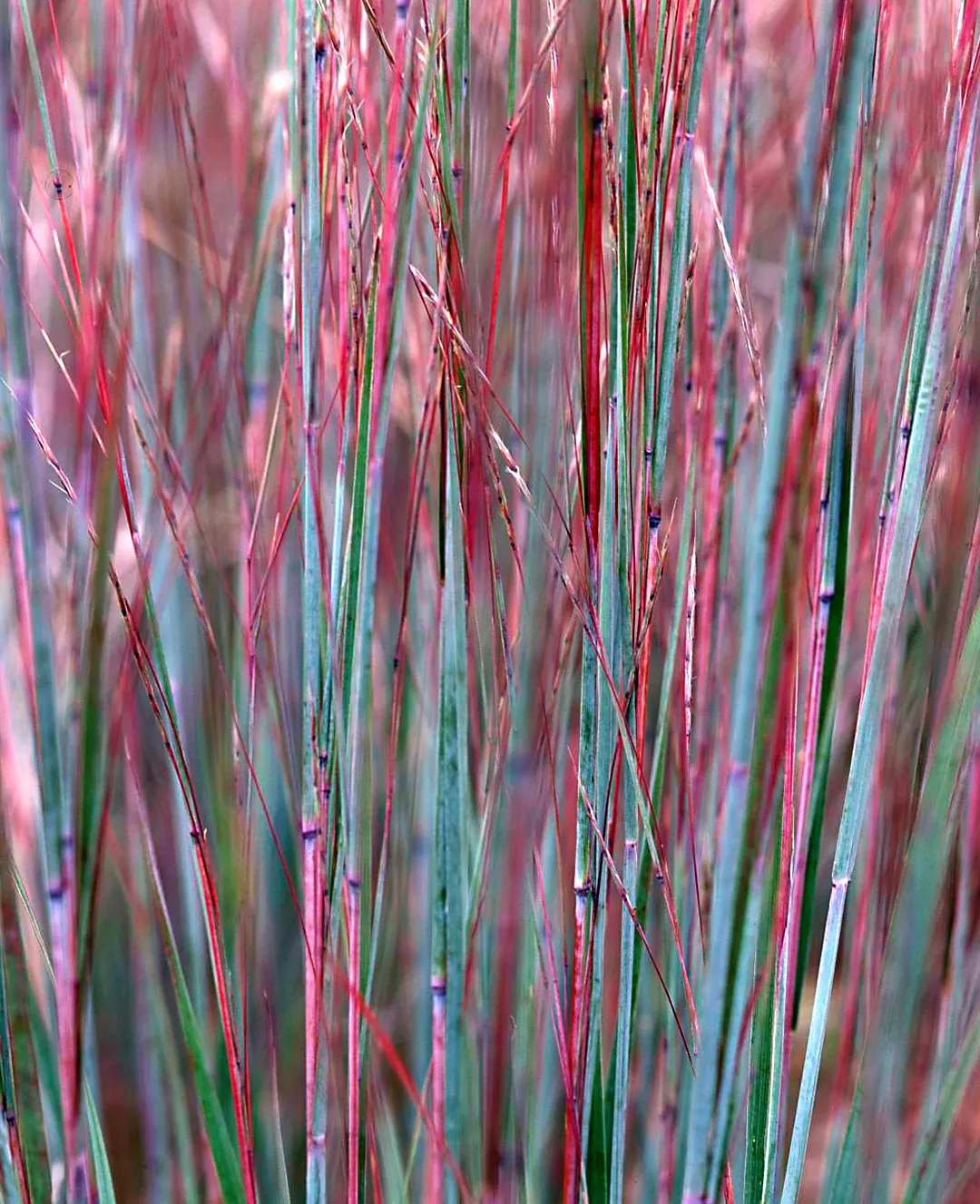
Little bluestem (Schizachyrium scoparium) is an easy-care ornamental grass that‘s beautiful in the fall when its blue-green leaves turn from rust to wine red. Birds, insects, and small animals use little bluestem for food and shelter. Clumps grow only 1–2 feet high, but flowering stems reach 5 feet. Zones 3–9
Big Bluestem
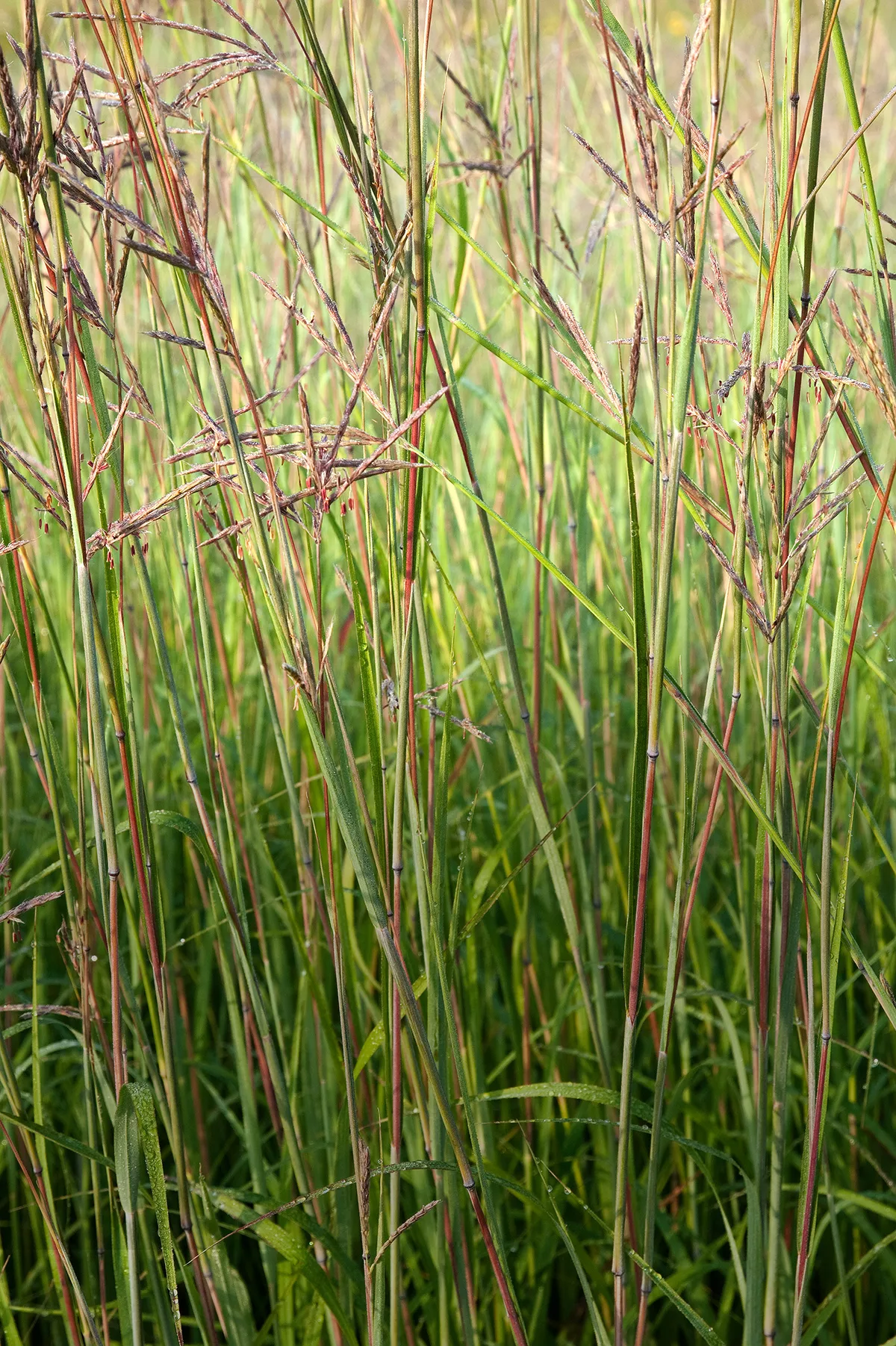
Big bluestem (Andropogon gerardii) is a warm-season grass, and most of its growth occurs during the warm summer months. However, this grass displays an attractive fall color and stands tall—up to 8 feet—through winter with its seed heads moving in the wind. Zones 4-9
Coneflowers

Coneflowers are native perennials that produce large blooms from summer to fall. Purple coneflower (Echinacea purpurea) blooms have a brown center with pinkish-purple petals, but other types are available in orange, yellow, and red shades. Most varieties grow to 4 feet tall. Zones 3–9
Joe-Pye Weed
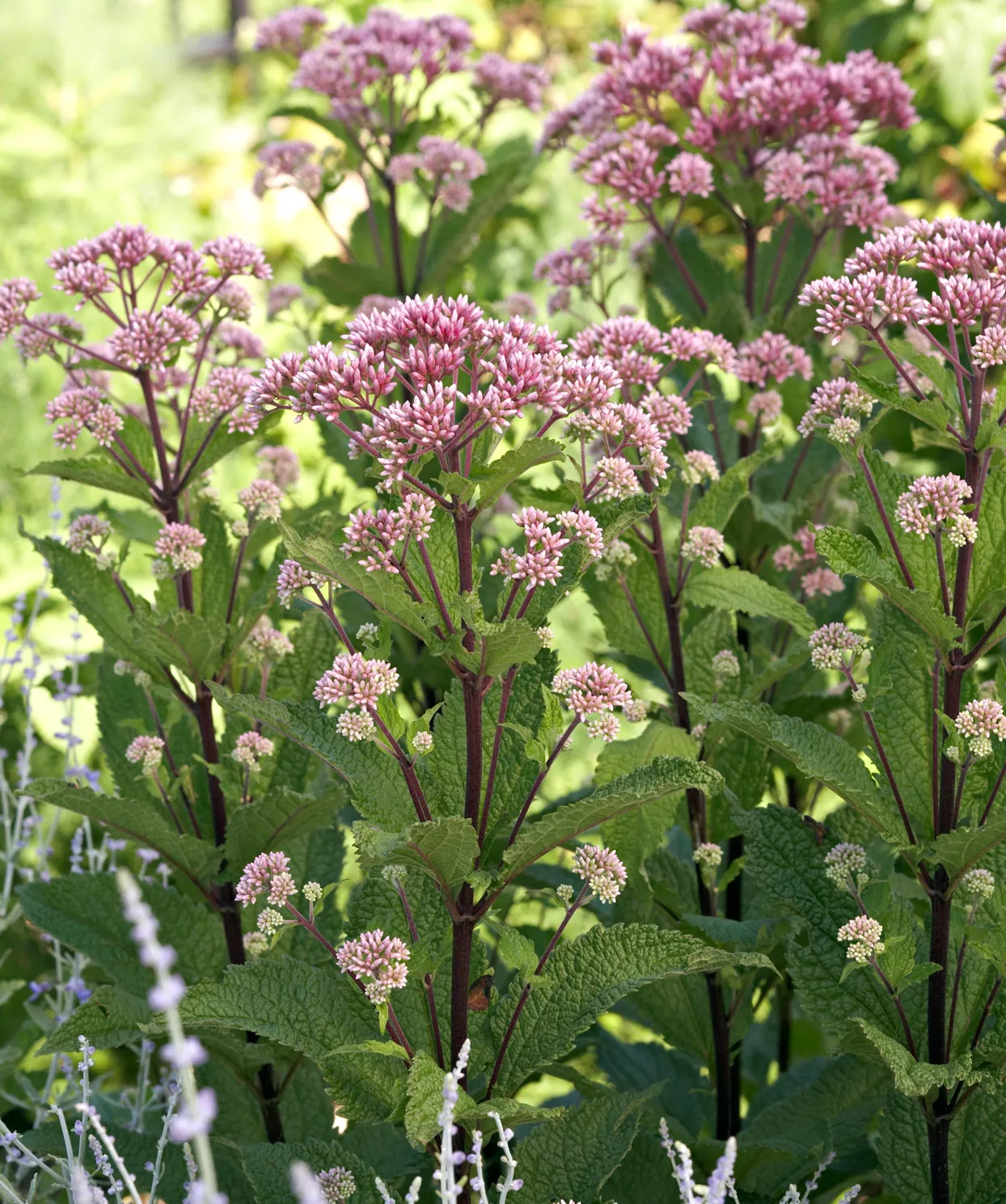
Joe-Pye weed (Eutrochium purpureum) is a native wildflower with deep green foliage and airy purple blooms that add texture to a garden or act as a backdrop for smaller plants. It blooms in late summer and is popular with butterflies and other pollinators. It grows to 8 feet tall and wide. Zones 3-10
Goldenrod
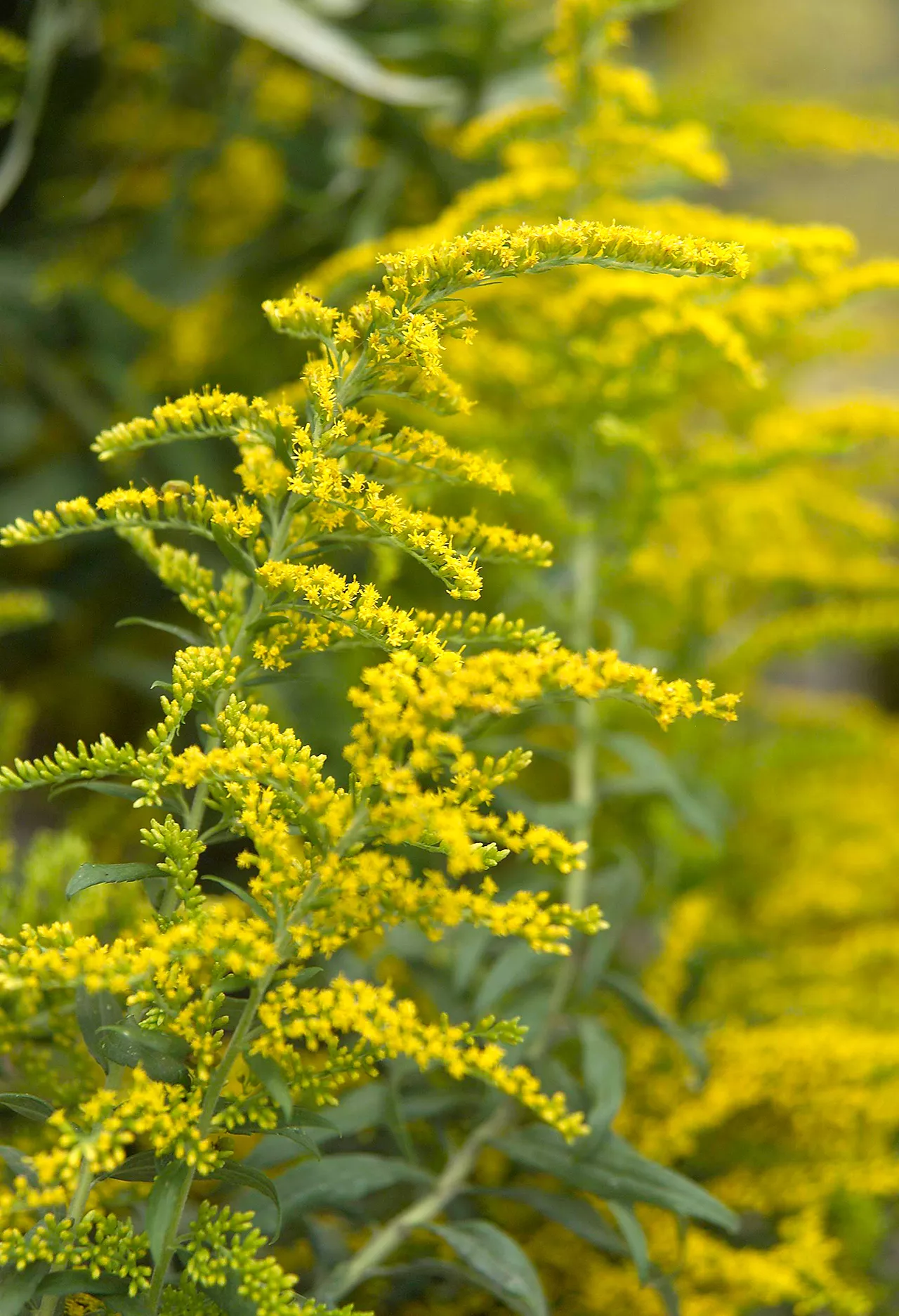
Goldenrod (Solidago spp.) displays its yellow blossoms beginning in late summer and continuing into fall. Some varieties feature large flower clusters at the tops of tall stems; others boast gracefully arching stems holding single rows of blossoms. It grows to 3 feet tall and wide. Zones 4-8
Frequently Asked Questions
-
Can cup plant grow in rain gardens?
Yes, cup plant tolerates rain gardens well, provided it is planted near the banks of the rain garden. It does not grow well in boggy soil, but it will grow in soil that is occasionally wet for short periods.
-
Where can I purchase cup plant?
Look for cup plants in the native plant section of your local garden center. Some native plant seed distributors sell cup plant seeds.
-
How long does cup plant live?
Cup plant is a perennial that lives for many years. Plants reseed freely and often grow in dense colonies, providing color and structure in the prairie or garden for decades.





